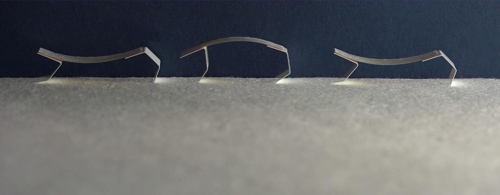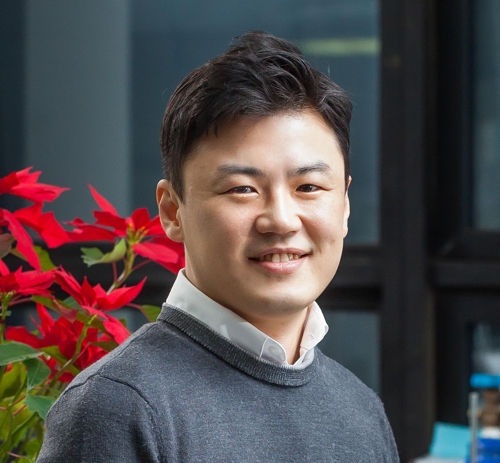Department News
Prof. Ho-Young Kim Develops Soft Robot Powered by Water
Prof. Ho-Young Kim’s Robot Tech Inspired by Movement of Plant Seeds<?xml:namespace prefix = "o" ns = "urn:schemas-microsoft-com:office:office" />

Hygrobot walking [Provided by SNU Engineering=Yonhap News]
(Seoul=Yonhap News) Article by Pyeong-cheon Choi = Seoul National University’s research team has developed a soft robot that uses water as energy to move.
On January 25, Seoul National University’s College of Engineering announced that Professor Ho-Young Kim’s research team from Department of Aerospace and Mechanical Engineering has developed the ‘hygrobot,’ a soft robot powered by humidity in the atmosphere.
The research team explained that while existing microbots are too small for batteries to be attached and therefore must be connected to an external power source, the hygrobot is able to move by powering itself.
The team took inspiration from the movement of wheat seeds. They dig into the earth with a special tail in order to survive in dry lands.
The tail of the seed has two layers: one swells up upon contact with moisture and the other doesn’t. So if the humidity is high, one of the layers swells up and the tail is curved to one side. If the humidity is low, the swollen layer deflates, making the tail twist to the opposite side. Repeating the process, the seed eventually moves toward the area with ample moisture.
Inspired by the principle behind this process, the research team piled up nano fibers in a single direction so that the body of the robot resembled the structure of the seed’s tail.
With special legs attached to its body, the hygrobot moves forward when placed on a damp surface, powered by the difference in air humidity from vaporization.
Just like the seed, the body of the robot is comprised of two layers, one of which inflates upon absorbing moisture while the other doesn’t react at all.
If there’s a high amount of moisture evaporating from the surface, the moisture-absorbing layer inflates, making the body curve upward. Since the body is now further away from the surface, this in turn causes less amount of moisture to be absorbed, making the body return to its original position. By repeatedly curving and straightening its body, the robot moves forward.

Prof. Ho-Young Kim, Dept. of Aerospace and Mechanical Engineering
[Provided by SNU Engineering=Yonhap News]
Professor Kim predicted that “hygrobots could be used as Smart Dust devices to gather information in war zones or areas with environmental pollution. They could also be utilized for medical purposes, placed on human skin to distribute necessary medication.”
The research has been published in the online edition of Science Robotics on January 25.
Link to article http://www.yonhapnews.co.kr/bulletin/2018/01/24/0200000000AKR20180124186300004.HTML
Related articles
dongA.com http://news.donga.com/List/3/08/20180126/88370910/1 Daily UNN http://news.unn.net/news/articleView.html?idxno=184559

